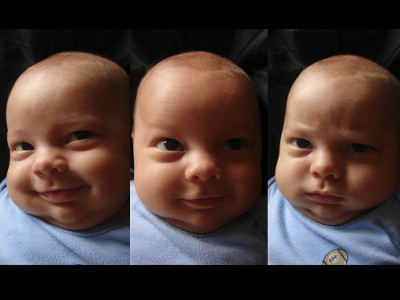Reason why Asians are not good at reading people's facial expressions clearly

People in East Asia, including Japan, tend to be weak in distinguishing human facial expressions such as "fear" and "surprise", "hatred" and "anger" compared to people of European origin But,Current BiologyAccording to the latest research results announced on August 13, the European people see the whole face of the person, Asian people seem to be looking at the eyes is the reason.
Details are as below.Facial Expressions Show Language Barriers, Too
University of GlasgowResearch by Dr. Roberto Caldara et al. And others showed that the communication of feelings between humans and humans is far more complicated than the experts had thought so far. Even "expressions" that were considered to be common to the whole world so far may not be reliable when communicating emotions between different cultures.
"For Toyo people and Westerners it became clear that where we look at facial expressions when reading facial expressions was different," Rachel E. Jack, a graduate student at the psychology department at the University of Glasgow. "While Westerners look at eyes and mouth to the same extent, Oriental people tend to focus more on their eyes and neglect their mouths, so that if the eyes look the same around different facial expressions , It will be hard for the Asians to distinguish. "
In the study, 13 Westerners (Western EuropeanCaucasian) And 13 Oriental people (East Asians) To show pictures of people of various facial expressions and ask them to classify those pictures as seven categories (happy, sad, surprised, fearful, disgusted, angry, irresolute), and the movements of the subject's eyes at that time I recorded it. As a result, Oriental people looked much closer to the eyes than Westerners, and there were as many significant misreadings in facial expressions.
According to Jack, the difference in movement of eyes when reading facial expressions seems to reflect the cultural differences in facial expressions themselves. This data suggests that Westerners rely on their eyes when expressing their emotions while mouths do not use much, while Westerners tell their emotions throughout their face.
The result of investigating the difference in east and west emoticons seems to support this theory.
"Emoticons are iconized versions of human facial expressions that are used to convey emotions in cyberspace, and interestingly, there are obvious cultural differences in the composition of these icons" Mr. Jack. "For example, when you are happy" :) "When it is sad, Western emoticons express emotions mainly in mouth, such as": (), while oriental emoticons are "^. ^" When happy, " Emphasis is placed on eyes, such as "; _;"
"Eyes say things as much as mouth", but it may be better not to rely too much on eyes when communicating with foreigners.
Related Posts:
in Science, Posted by darkhorse_log







